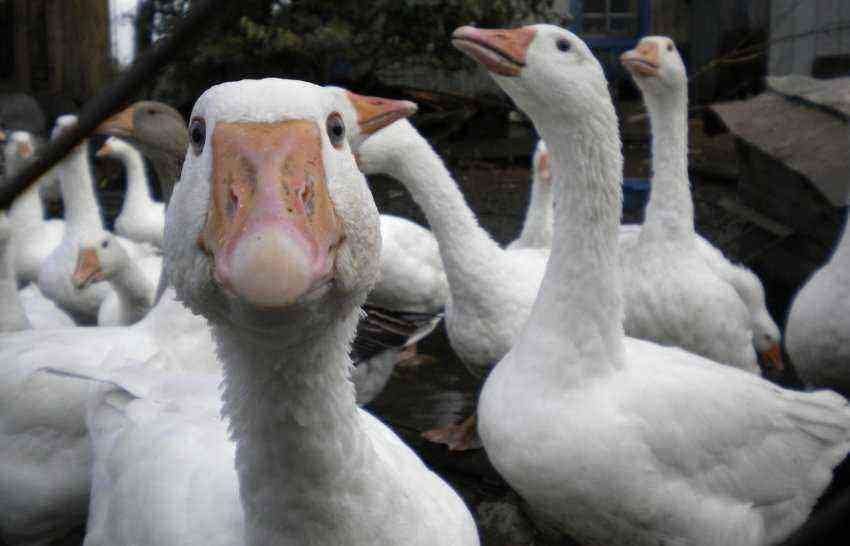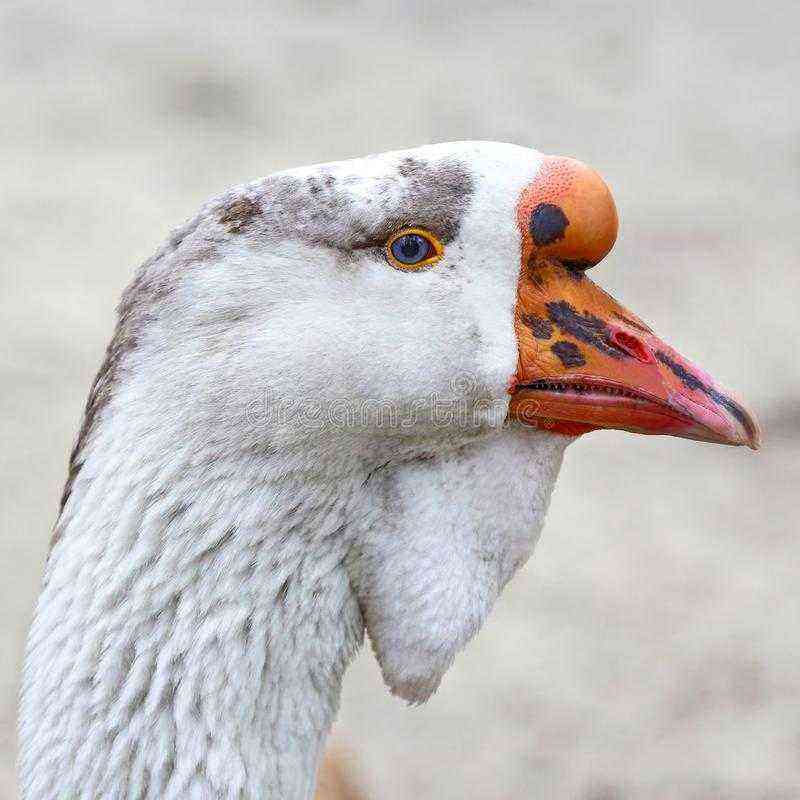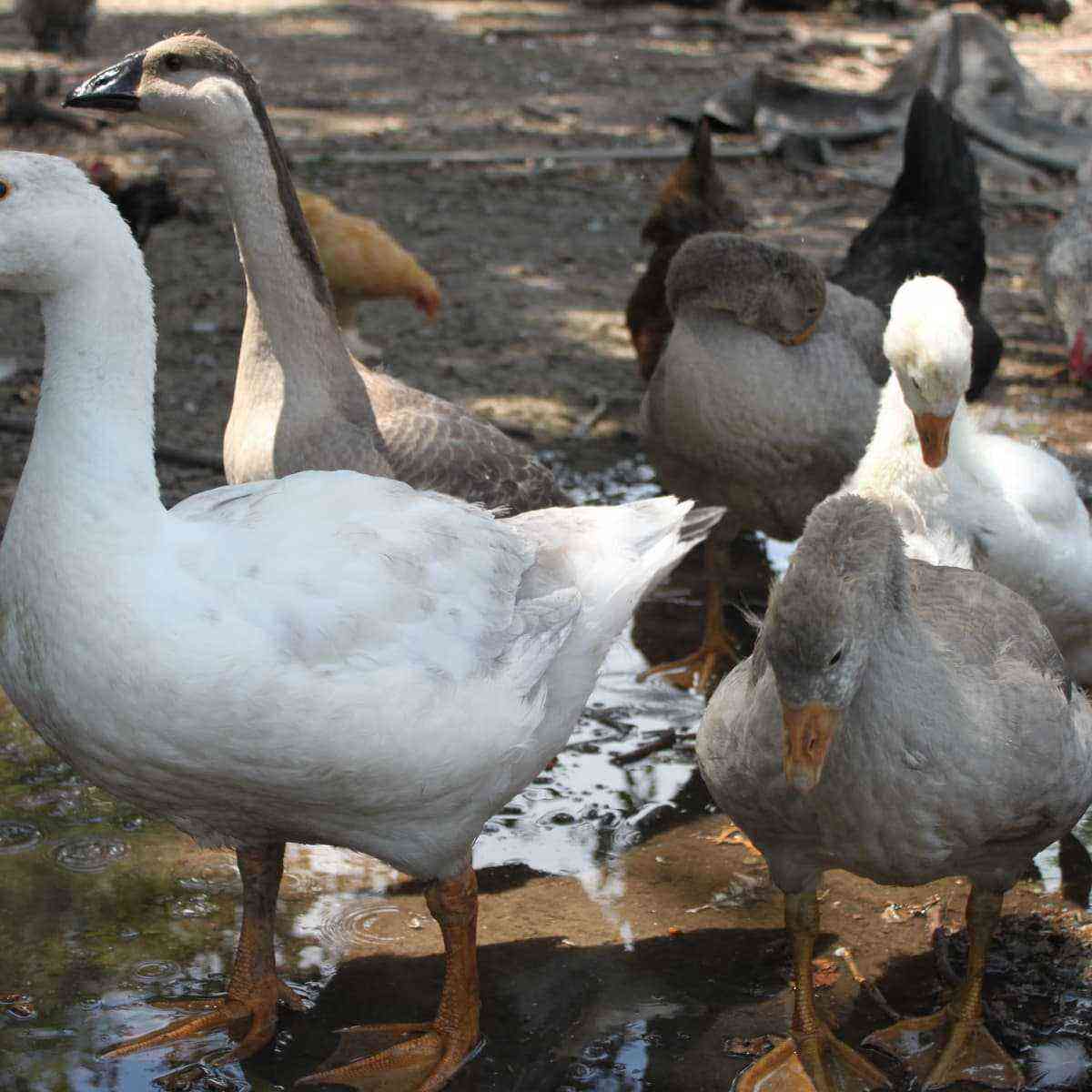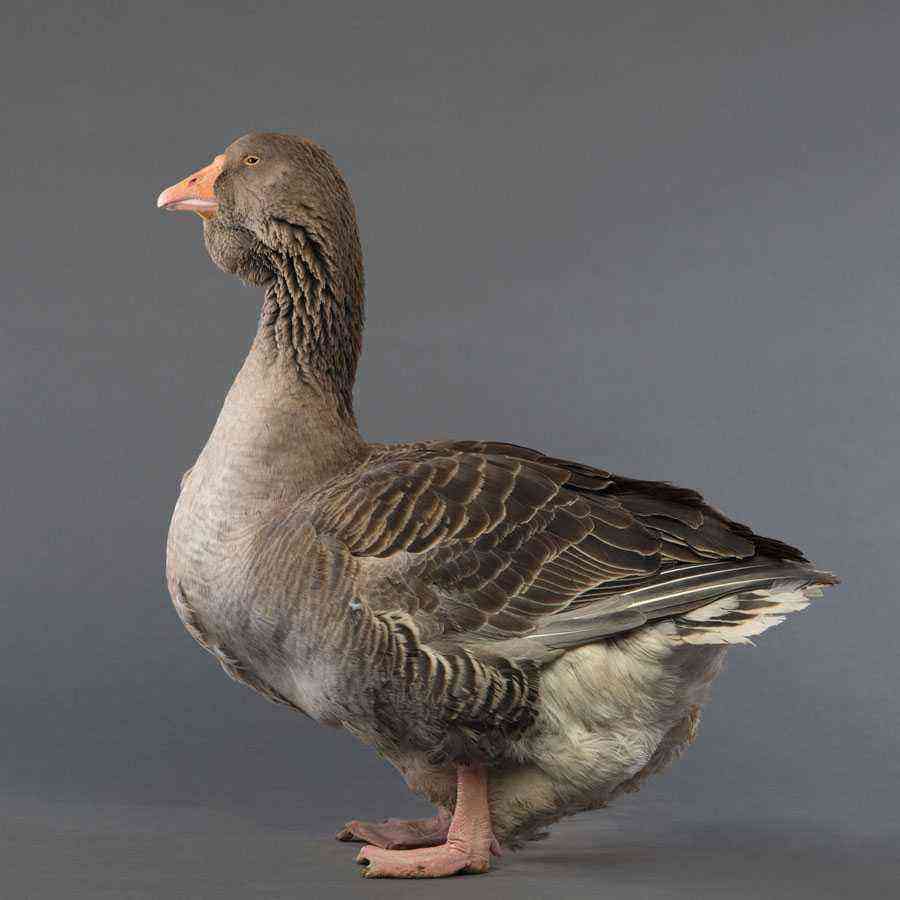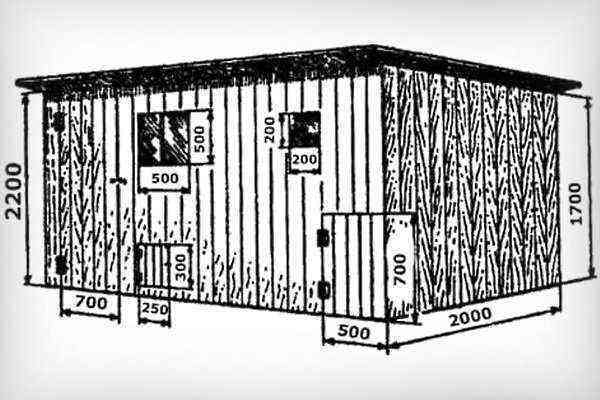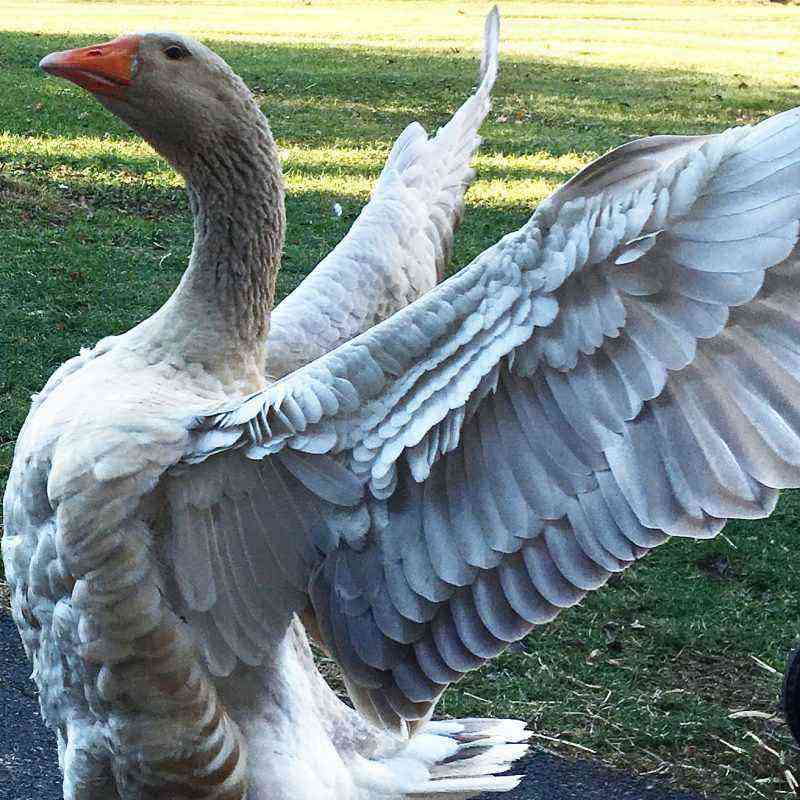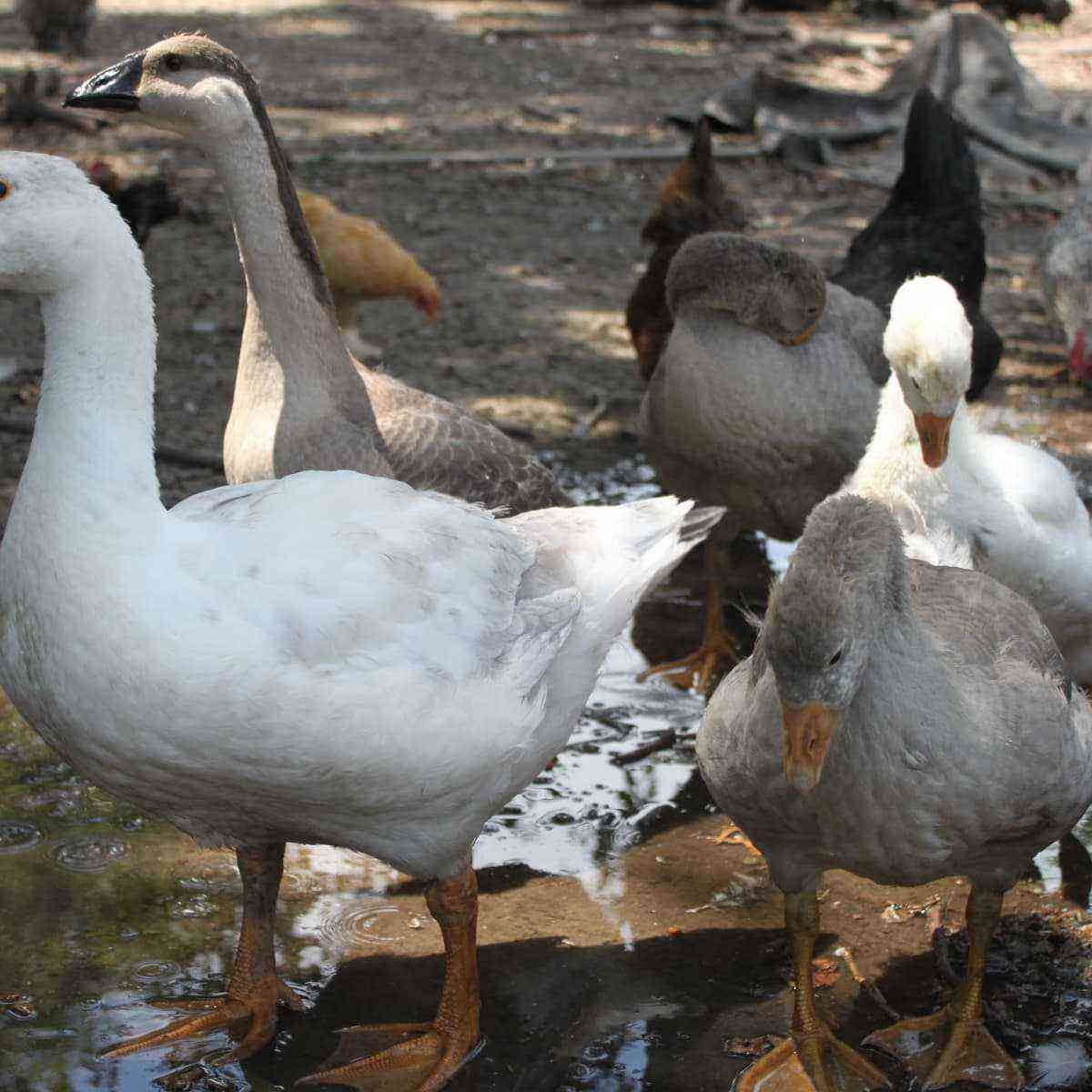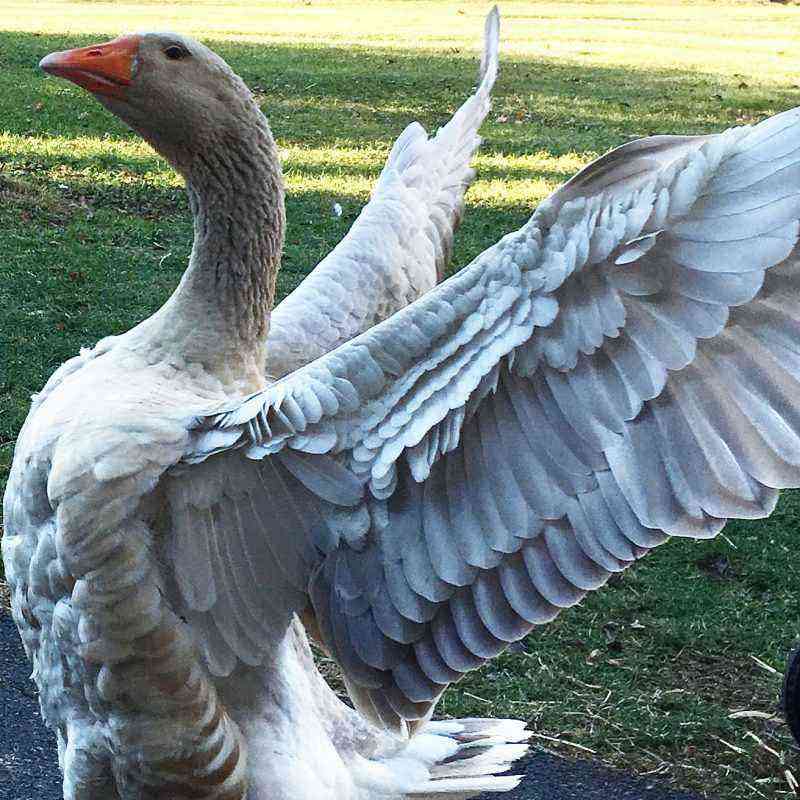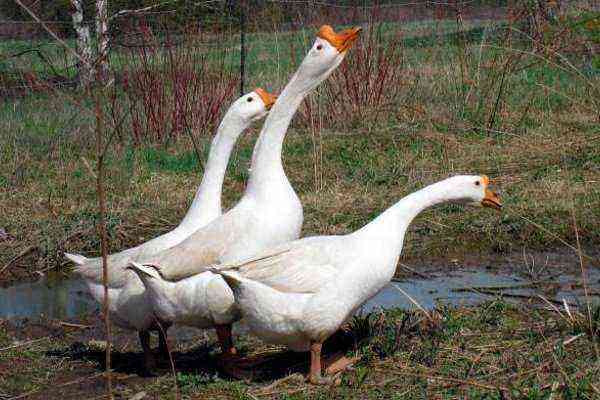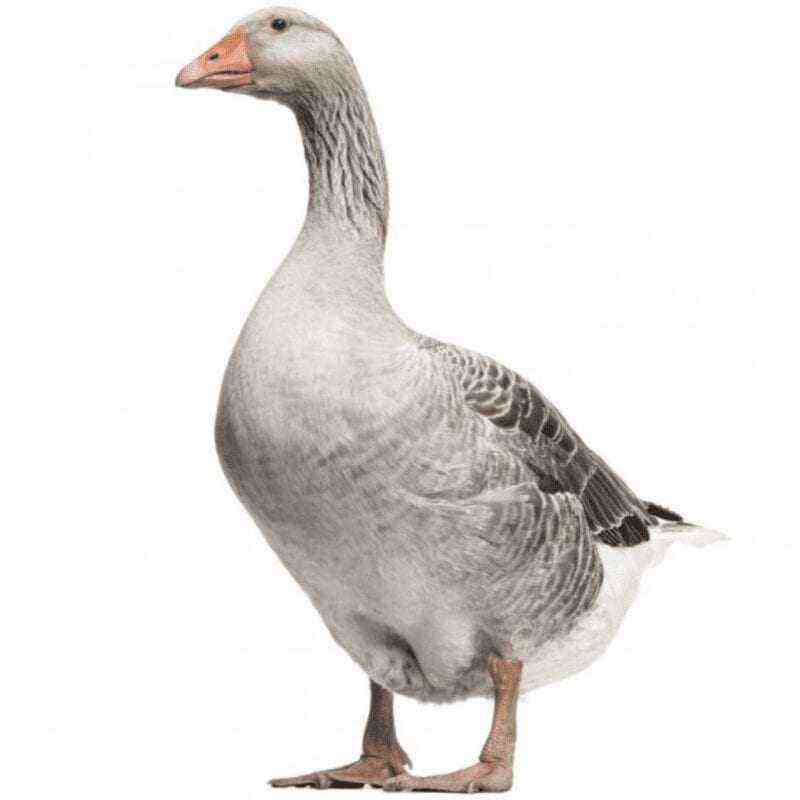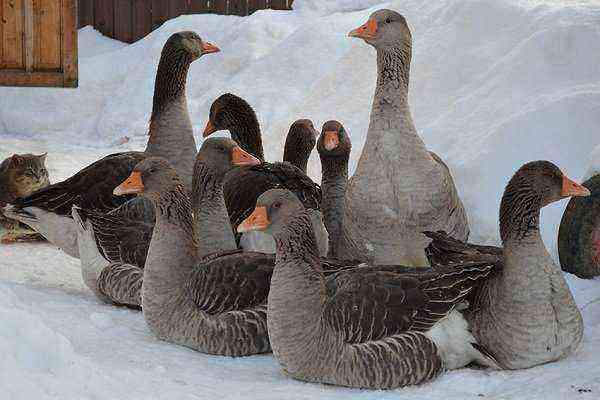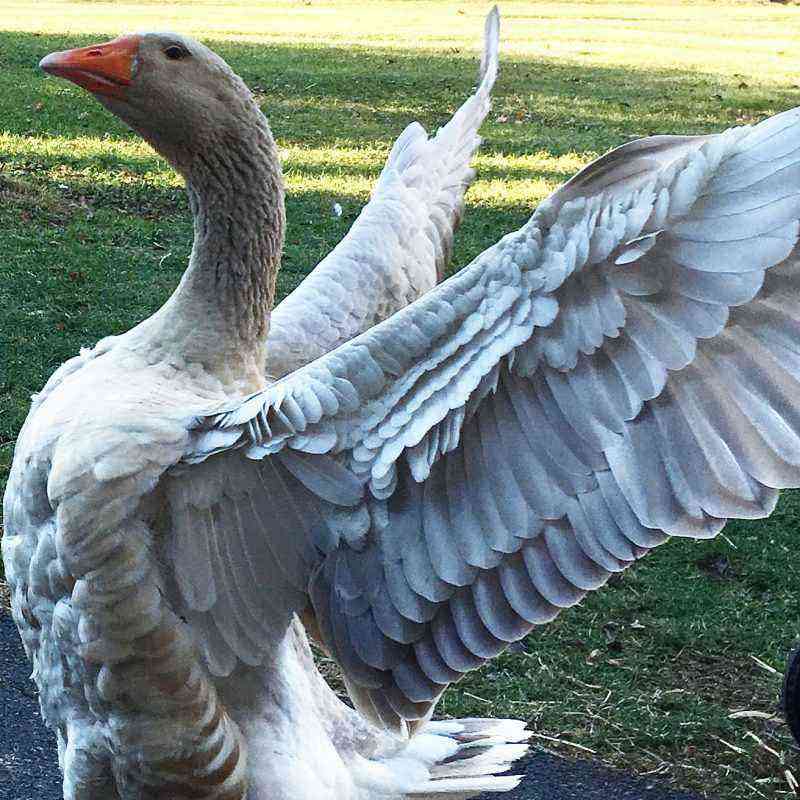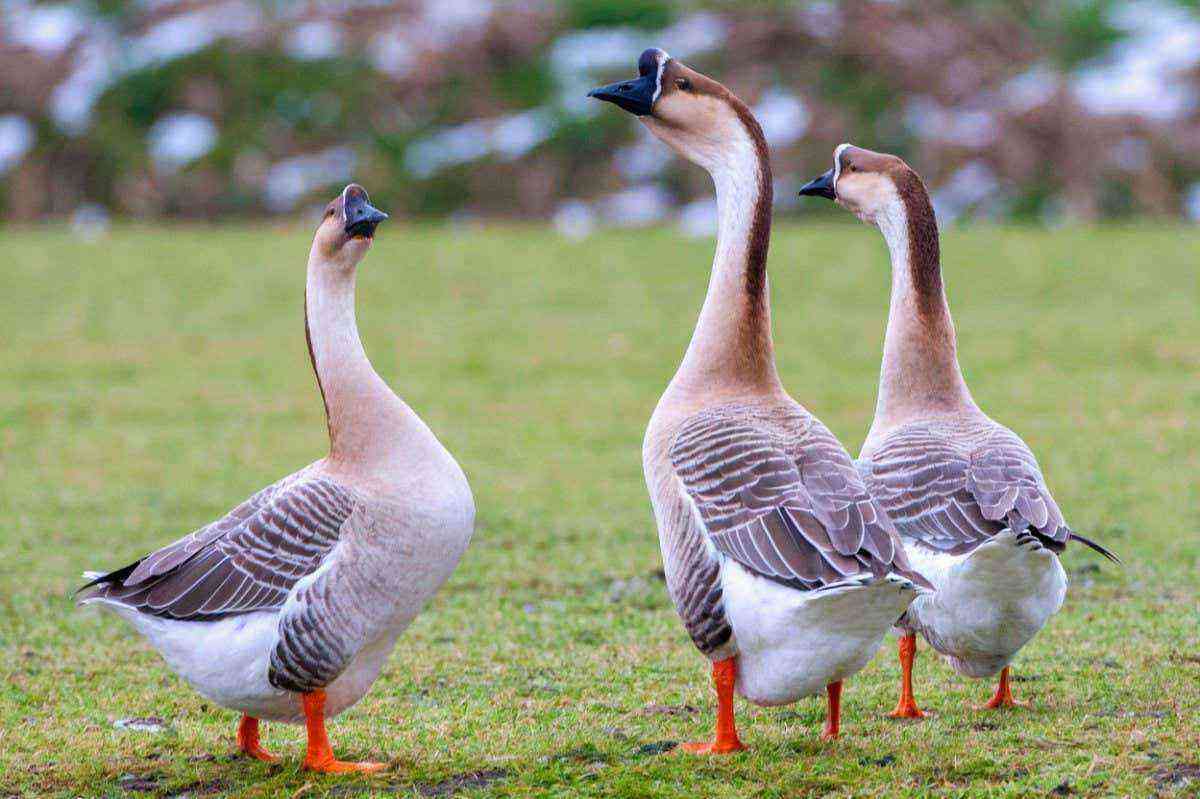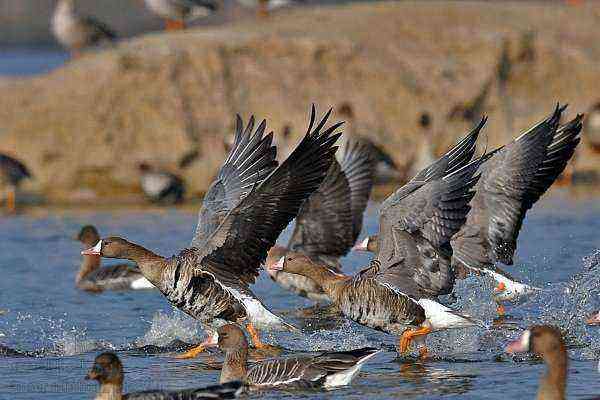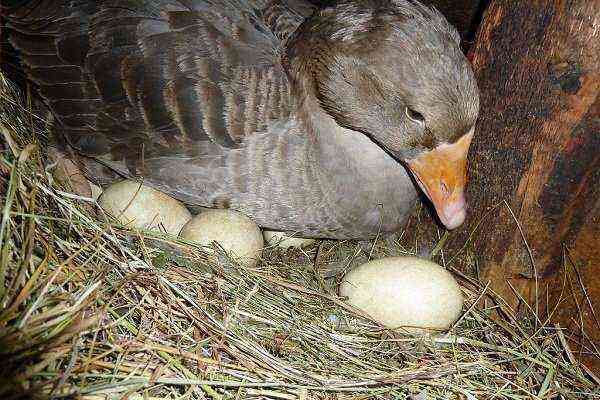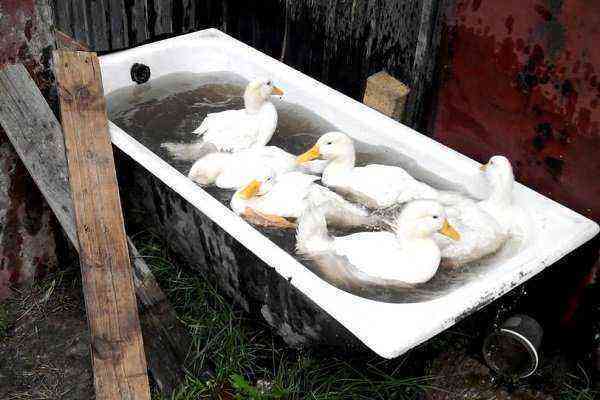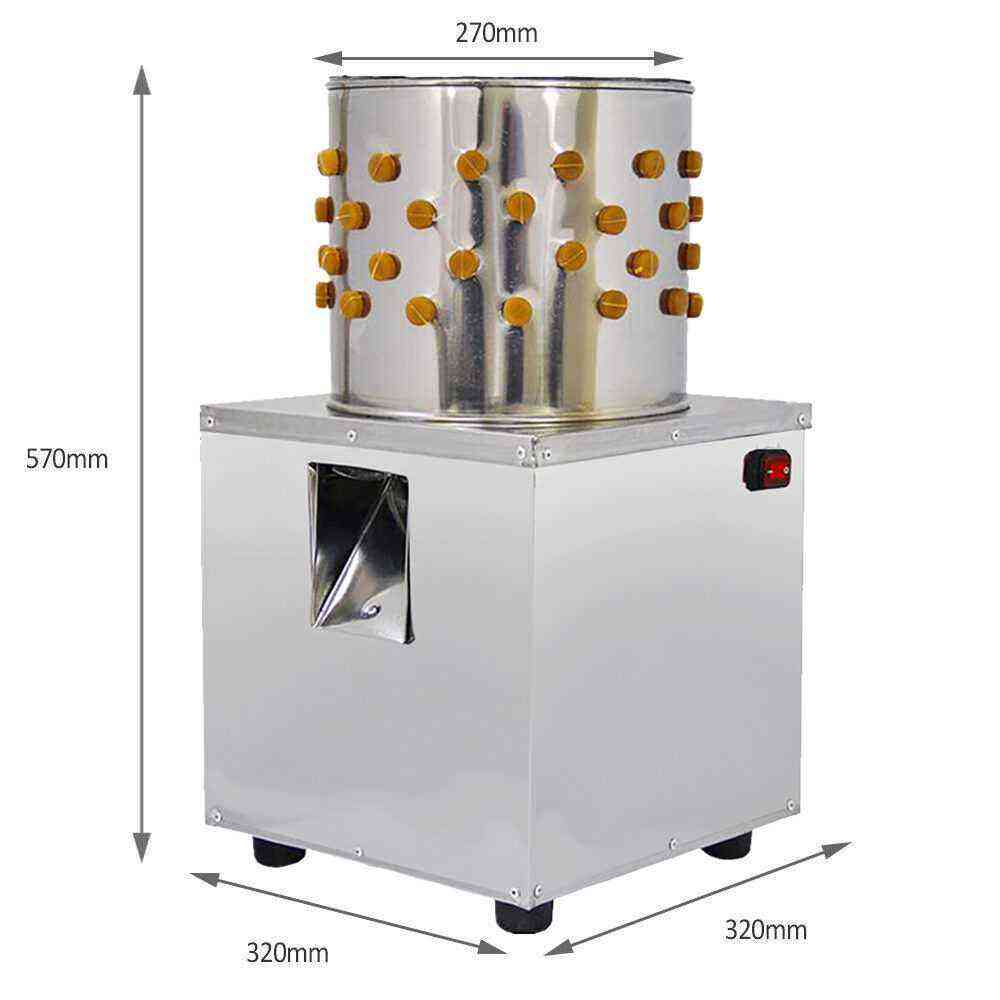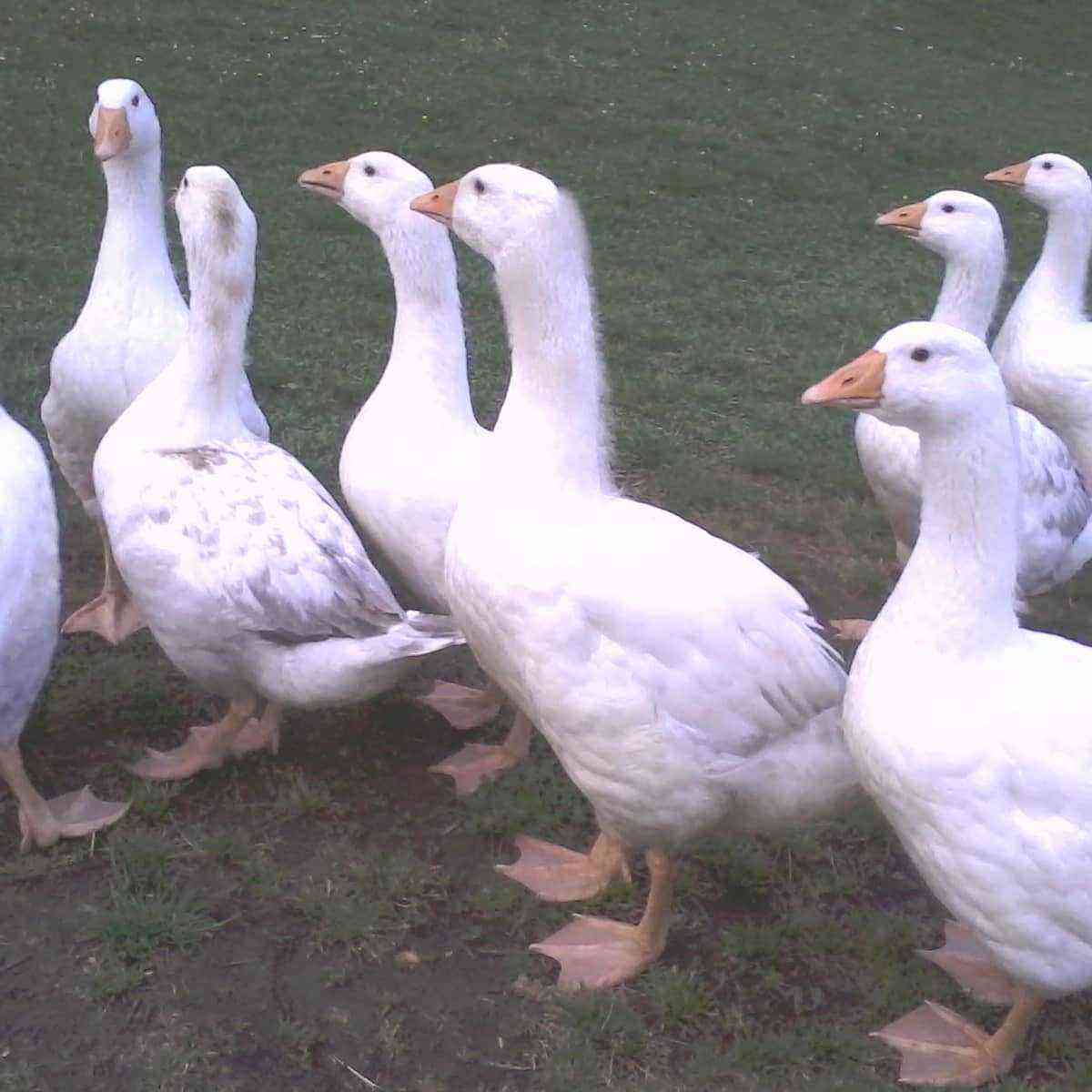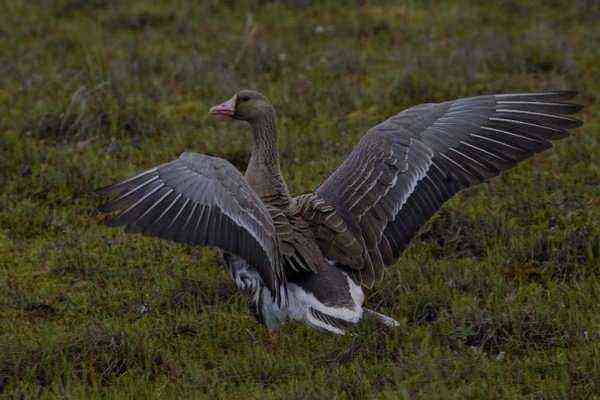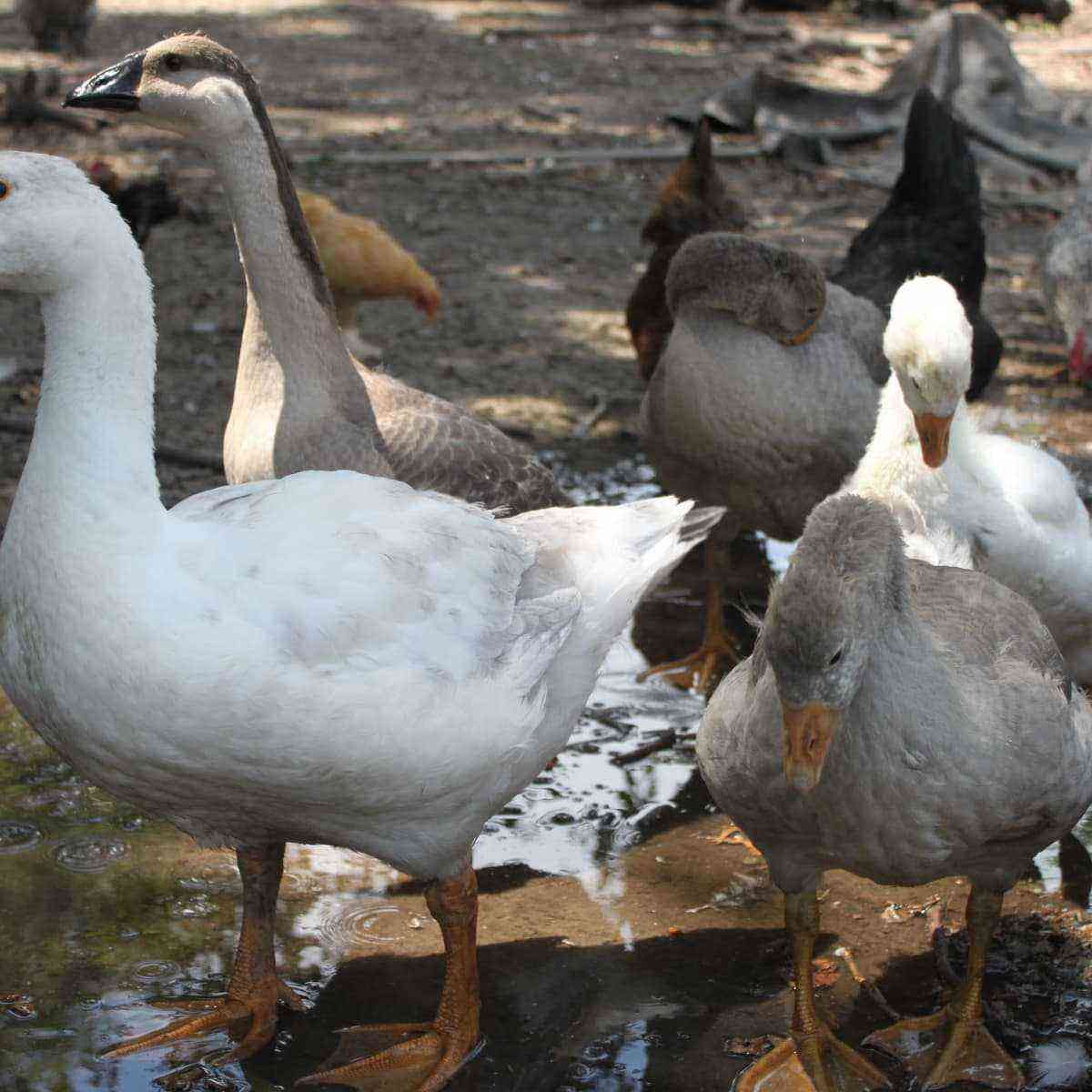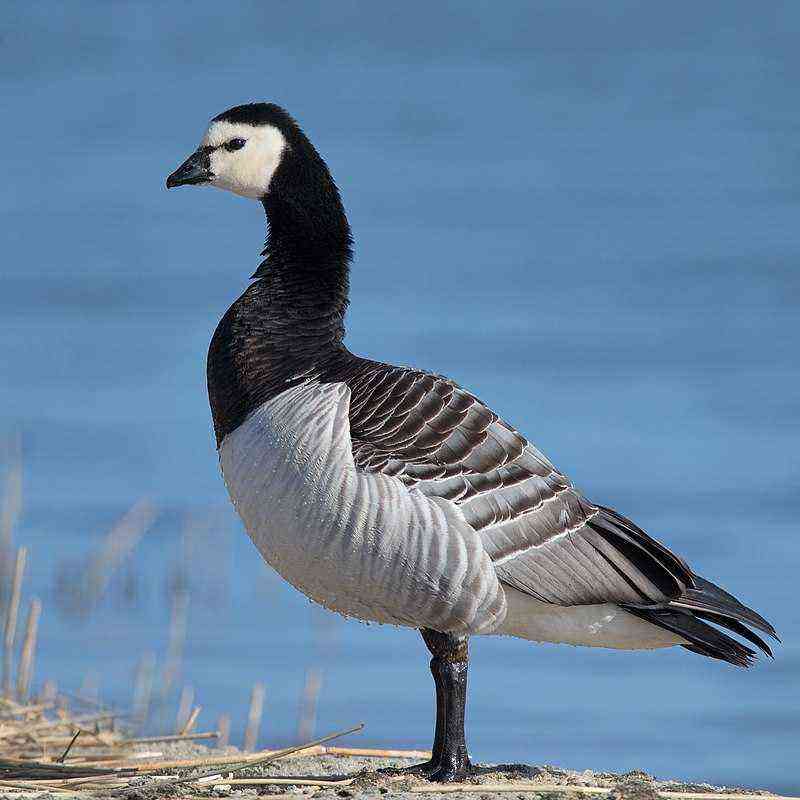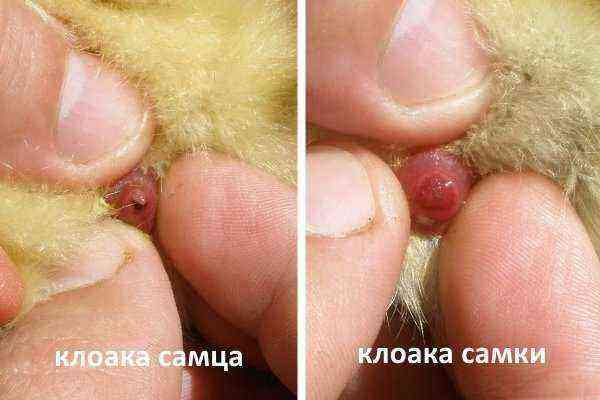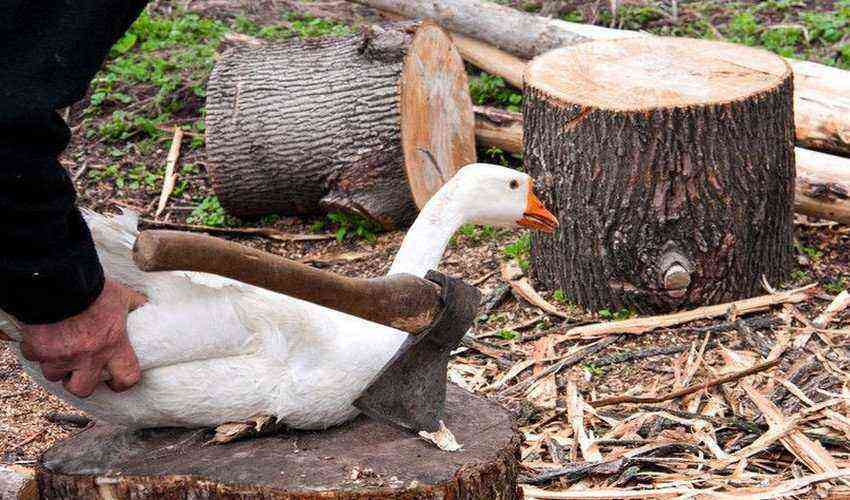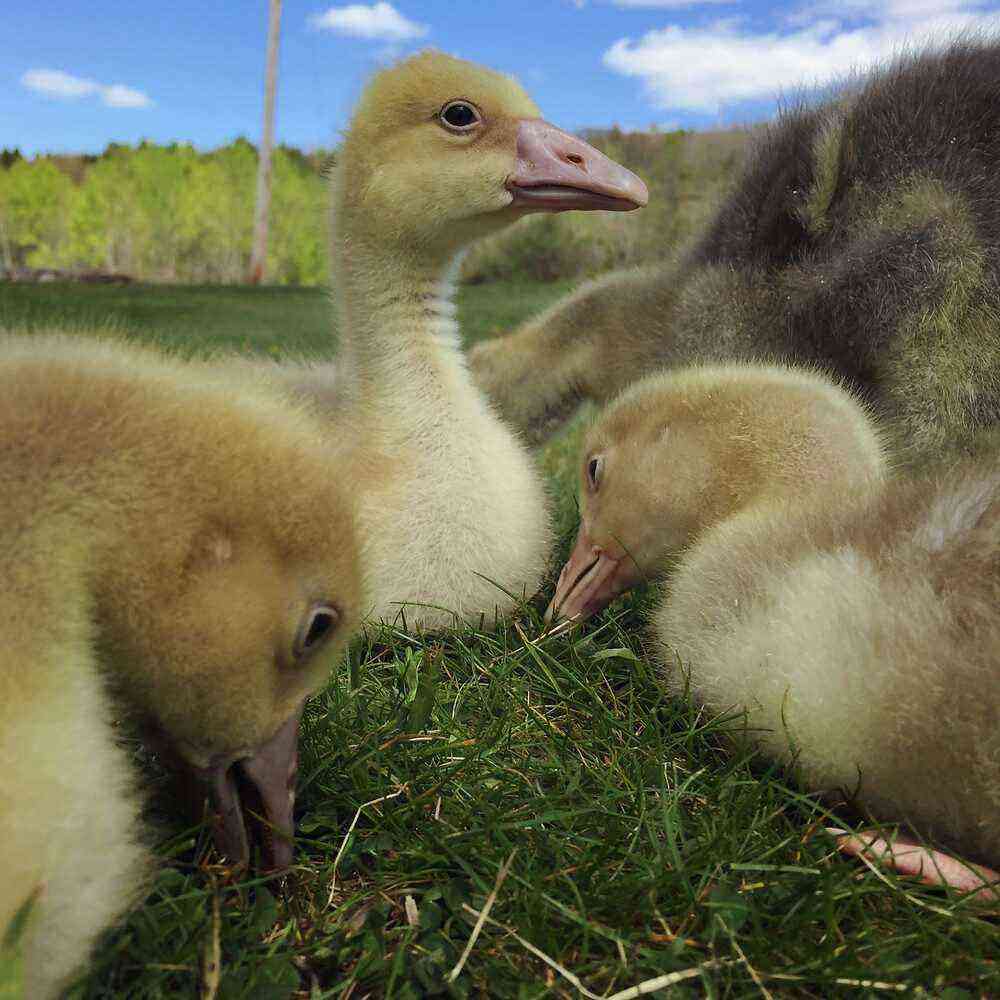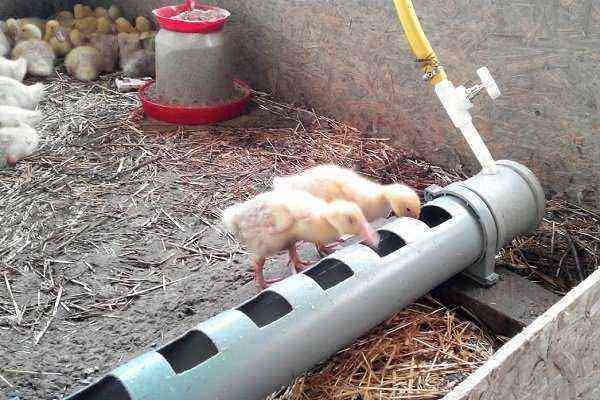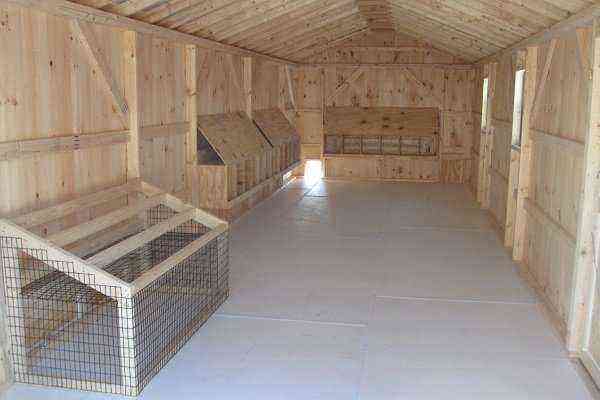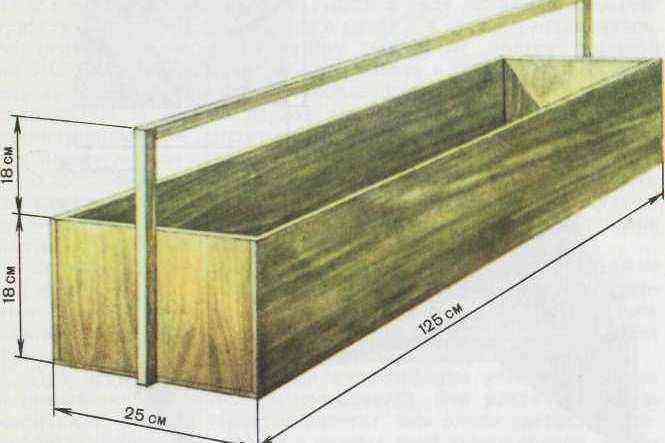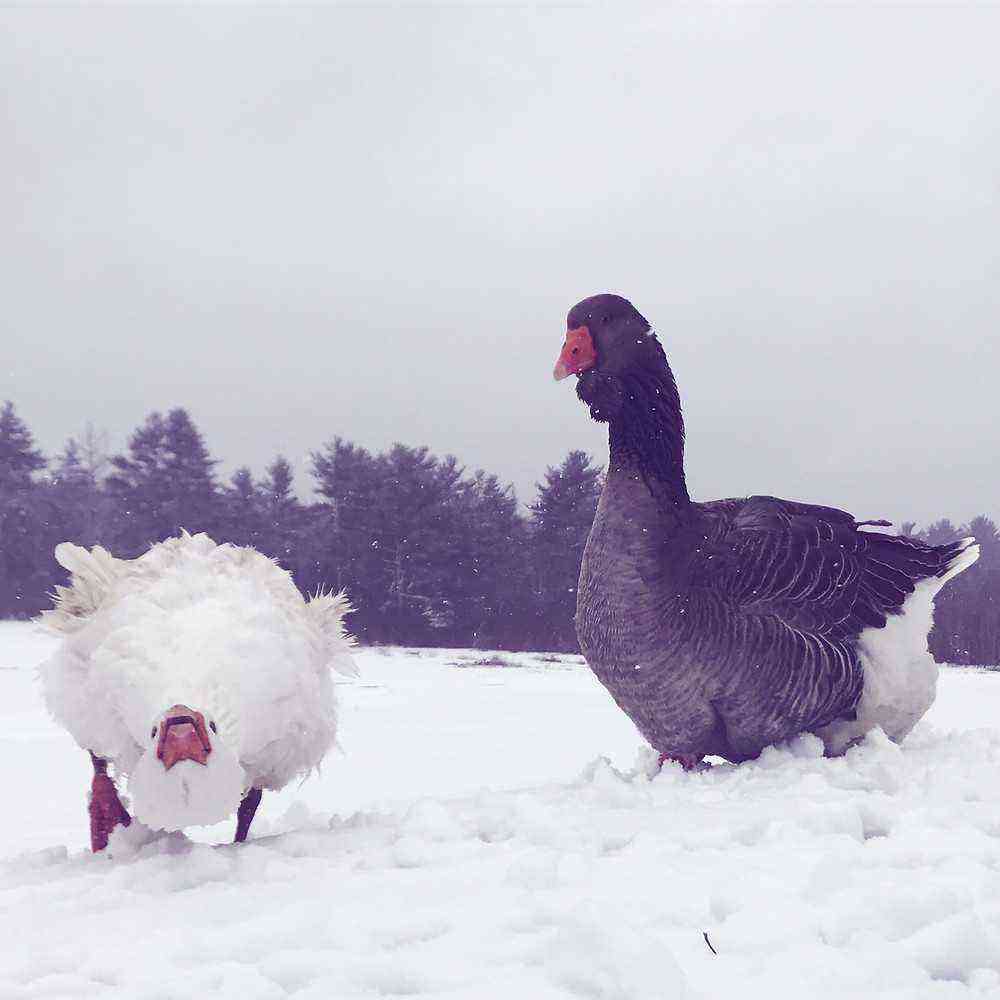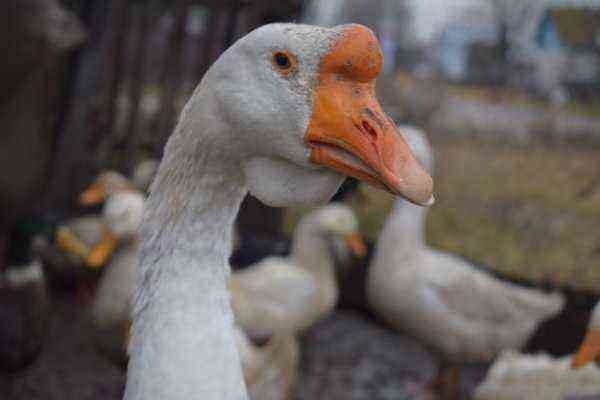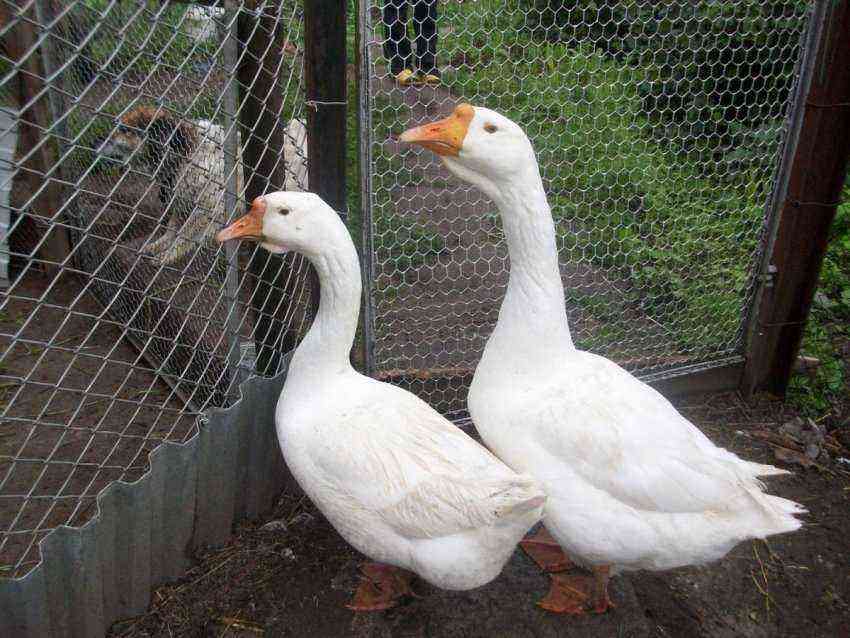To carry out the procedure of plucking a domestic goose, a certain manual dexterity is required. Those who have been keeping poultry for a long time have probably already mastered this skill. But, and for those who are just starting to comprehend this craft, it is advisable to familiarize yourself with each of the available independent ways of plucking poultry.
Preparing the goose for the plucking procedure
The plucking procedure must be approached responsibly. First you need to carry out a few simple preparatory activities.
First you need to choose the right place – the humidity level should not exceed the norm, the light is dimmed, because then the goose will not peck its droppings, and the feather will remain clean. If there is a natural reservoir, it is recommended to send the bird to bathe. Ten hours before plucking, the geese are not fed, only warm water is left for the birds.
A solution of table salt has a laxative effect on geese, helping to arrange a cleansing of the stomach and intestines. This is necessary for the procedure for bleeding the bird, which is carried out before the start of plucking.
Before slaughtering and plucking goose feathers and down, it will take some time for the carcass fat under the skin to freeze. The process of bleeding the feathered is carried out by hanging the carcass upside down.
Ways to pluck a goose
When cold weather sets in, the owner of domestic geese wonders how to pluck the carcass. There are several methods and each of them has its own advantages and disadvantages.
Regardless of the chosen method of removing feathers from the carcass, do not forget that goose feathers and down are extremely valuable raw materials. They are sure to find their application in any textile store. Some of the methods presented below do not involve the use of this material in the future, while others allow you to save it in its original form.
Goose meat is considered a delicacy and is used to prepare some of the most delicious dishes. And feather and down are perfect for stuffing feather beds and pillows.
Dry method
The dry method of plucking this bird is used exclusively after the slaughter of the goose. The presence of any special nozzle or device is not required. When carrying out dry plucking, it is necessary to tie up the paws and wings of the bird. Positioning the carcass on their feet, they remove the feather with their hands. Start the process with large ones and finish with small feathers.
Large feathers are much more difficult to pluck, as they are attached to the skin much more densely. In this regard, it is recommended to start the process of dry plucking from the wings and tail, and end with the sternum, neck and legs.
The feathers removed from the armpits of the bird are discarded. If you want to cook the carcass whole, without cutting it into separate parts, then you should not pluck it at a time. Dry intensive plucking seriously damages the outer skin of poultry, and it becomes less aesthetically pleasing.
Scalding
Before plucking feathers, many owners of domestic geese prefer to scald the carcass. This procedure helps to soften the skin so that the feathers come out with little effort. The temperature of the boiling water in which the carcass is placed must be at least 80 degrees Celsius.
The disadvantage of this plucking method is the impossibility of further use of the feather and the resulting fluff. It is necessary to put the meat on sale as soon as possible, since it is impossible to store a scalded carcass for a long time.
The method of plucking a goose by scalding is presented in the video below:
This method is good only if you do not plan to use down and goose feathers for sale or other purposes in the future, since it is simply impossible to dry the goose feather.
Cool way
Removing a goose feather using the cold method involves sorting the feathers by size, dividing them into small and large. This saves a lot of time in the future. In order to prevent contamination of the feather, a piece of cotton wool is placed in the bird’s beak.
There is no need to use special attachments for processing poultry. It is only required to place the carcass in a cold place for 3-4 hours. This will allow her to cool after slaughter, and the subcutaneous fat to freeze. Thus, the feathers will be removed much easier.
The cold method of plucking a goose is most often used by hunting enthusiasts, because this way it is possible to keep the carcass safe and sound.
So that the carcass is not visually injured, it is desirable to remove feathers and down in the direction of their growth.
Pump application
Not everyone is familiar with the method, which involves the use of a pump to pluck a domestic goose. To do this, you need to take a conventional device for inflating a bicycle tire. This feather removal method is quite often used in combination with a household iron with a steam function. This allows you to reduce the overall time of work with one carcass.
The plucking procedure is carried out as follows:
- Position the pump hose in the space between the goose bumps and the cervical vertebrae.
- Pump the carcass with air until the feathers rise slightly at the roots.
- Tie the bird’s throat with twine to prevent air from being pumped out.
- Starting from the back of the bird, manually remove the large feathers first, then the smaller ones.
Iron use
Not everyone knows that the process of plucking a domestic goose can be done with an ordinary iron. For its implementation, you will need to acquire some important items:
- pump (it is permissible to use the one designed for air mattresses);
- a container with cold liquid;
- a piece of natural fabric;
- twine;
- iron.
The procedure for plucking a goose carcass with an iron is as follows:
- Before plucking the carcass, insert the pumping tube between the skin and the neck of the goose. Pinch so that air does not leak out and pump air until the feathers become vertical.
- Try not to over pump as there is a chance that the skin of the carcass may burst.
- Remove the tube and tie the bird’s neck with twine to prevent air from escaping.
- Lightly dampen the fabric with cool water and place on top of the feathers, start ironing. You can use a gauze pad wrapped in two or three layers.
- Turn on the steam function on the iron.
- As soon as the piece of fabric is dry, remove the iron and pluck the feathers. In case of difficult plucking, steaming in this area should be repeated.
You can watch the plucking of a goose with an iron in the following video:
Drill bits
Removing a feather with a drill is one of the most time-consuming, but at the same time fast methods. It is most likely needed by those who keep a large number of geese. And after slaughter, the cleaning procedure must be carried out quickly, until the meat begins to deteriorate.
In addition to a drill, you can resort to using a screwdriver. You will need to purchase special nozzles for plucking. They can also be used for processing other game. The used collar drill (or screwdriver) is firmly attached to the table, then the tool is turned on and the goose carcass is brought up.
Goose wings are peeled off on both sides. For convenience, they must be straightened by slightly pulling the carcass by the legs. To remove the feather from one bird faster, a little experience is required and in the future the process of processing one goose will not take more than 2-3 minutes.
Light Feather Removal Technique
To date, there are several different ways to pluck a goose at home – manually and using a special drum. The latter involves placing the carcass in a rotating container of water.
When the drum is turned on, feathers are removed from the bird. Despite the fact that this plucking technique is quite simple, it does not completely remove the feather from the carcass. Therefore, the bird will still have to be plucked on its own, manually. The advantage of this method is the reduction of time to work with one carcass.
A spinning drum is available at any hardware store, but you can make your own if you want. Drums from washing machines are also ideal.
To make such a tool yourself, you will need to acquire a suitable cylinder and carry out the following manipulations:
- At a distance of 2 cm, make holes in the cylinder.
- Attach a bottom made of durable material and a cap that is the correct size for the diameter of the cylinder.
- Make a hole in the lid for a hose that will allow you to spray the carcass while removing the feather.
Singeing goose carcass hairs after plucking
The method used to remove a feather from a domestic goose is not so important. Based on the desired result, plucking can be either cold or dry or with boiling water. Singeing is an important and mandatory step in removing a feather from a bird. You will need to get a gas burner (stove) or a soldering iron.
It is necessary to ensure that the skin of the bird does not roll, therefore, when singeing, it is slightly stretched. To prevent soot from appearing on the carcass, it is advisable not to bring the bird too close to the source of fire. If this still could not be avoided, it is recommended to roll the meat in wheat flour or bran, due to which it will get rid of the characteristic smell of smoke and acquire a more pleasant taste.
You can see how the goose is singeed after plucking in this video below:
How to collect feathers from a live bird?
Keeping a domestic goose is a non-waste production. Collecting feathers while the birds are growing up allows you to earn extra money. To do this, they combine plucking and natural molting, which takes place after the geese lay their eggs. This happens only twice – in early June and July.
When shedding, regrown goose feathers are replaced by new ones. This makes it much easier for birds to remove feathers. It is recommended to start with geese, which are already undergoing the natural process of feather renewal. For the purity of the raw materials, it is necessary to allow the birds to swim in the pond.
The whole process goes like this:
- Before plucking the bird, carefully tie the paws.
- Lay the goose on its back on your knees and pluck it, starting from the sternum.
- For one procedure, do not take a large amount of feather, otherwise you can expose the skin of the goose.
- Plucking with your index and thumb fingers, gradually move to the back of the bird.
- In no case do not remove the feather from the shoulders, hips, tail, wings and neck.
When living in a warm region, it is permissible to collect feathers two more times in the autumn, in early September and October. If drops of blood appear during the plucking process, it must be stopped immediately, since this process must take place without compromising the health of the bird.
The procedure for plucking a goose is not as complicated as it might seem at first glance. It is enough to follow simple rules and as a result you can get a clean feather and perfect goose meat.
